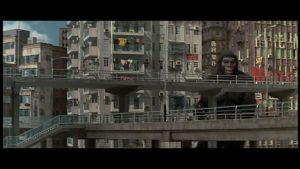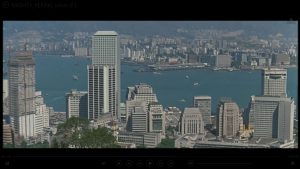Formatting Instructions:
- Title: [FIELDWORK] FILM NAME, SPACE/PLACE/BUILDING (e.g. [FIELDWORK] THE MIGHTY PEKING MAN, JARDINE HOUSE])
- Film Name in Arial, 24pt, Bold, Cap Letters; Director’s Name and the Year of Film in “Heading 5” style
- Space/ Place/ Building Name, District, Hong Kong in “Heading 4” style
- 500-Word Text and Notes in “paragraph” style
- Add annotations for each image in “paragraph” style
- — Your Name, Your UID in “paragraph” style
- Use the Chicago Style for References
- Remember to tick the relevant categories (2021 blog, FIELDWORK) and add tag (FIELDWORK). You should do this for every blog post you make
- You may duplicate this post directly by going to “All Posts” on the side bar in “Dashboard” and press “Duplicate This” to follow all the formatting styles directly
Find below an example of the fieldwork report, an excerpt from The Resistant City by Dr. Eunice Seng.
THE MIGHTY PEKING MAN, DIR. MENG HUA HO (1977)
Jardine House, Central District, Hong Kong

Utah jumps from the top of the fifty-two-story Jardine House and lands in the General Post Office. Scenes from the Shaw Brothers’ The Mighty Peking Man 1977, directed by Meng Hua Ho.
Shaw Brothers released The Mighty Peking Man in August 1977 (released in the US as Goliathon in 1980). The film retells the King Kong myth with Hong Kong as the signifier of modernity and urban civilization. Jardine House was the centerpiece.1 The film opens with the Main Building of the University of Hong Kong (1912), and the Students Union Building (1952) (demolished in 1986) in the background.2 The pre-war colonial neoclassical architecture and the postwar international-style building captured in a single frame signifies the coexistence of traditional and modern, a trope that is sustained throughout the film. The characters travel from Hong Kong to the Himalayan Mountains through a modernizing Bangalore and back to Hong Kong’s Central District, with its gleaming skyline of concrete high-rise office buildings.
Captured and subdued, the giant ape named Utam arrives in Hong Kong’s modern Victoria Harbour. On the Kowloon side is the colonial neo-classical Kowloon-Canton Railway station (KCR), soon demolished to give way to the Cultural Centre in 1978. Across the harbor on the Hong Kong side, high-rise office buildings define the Central District. The oldest of these date back to the late 1950s. Jardine House stands as the newest and tallest. No one is more critical than Ackbar Abbas who describes Hong Kong’s representation of itself as a simultaneous disappearance and reappearance. For Abbas, the representation of Hong Kong as an East-West city, promoted by the Tourist Association through the image of the Chinese junk against a backdrop of tall modernistic buildings, is an example of how such a narrative, which has since been the dominant discourse on Hong Kong, “manages to make a complex space disappear into a one-dimensional image, structured on a facile binarism.”3
That “one-dimensional” image of modernity is the leitmotif of The Mighty Peking Man. Most of King Kong takes place at night where downtown Manhattan is in silhouette. The twin towers were presented as sinister towering figures resembling Kong’s mountainous island in the Indian Ocean. In The Mighty Peking Man, Jardine House is presented amidst Hong Kong’s skyline in broad daylight. The building is introduced by the protagonist for its “fantastic views”, the city skyline as a “new home” for the giant ape and his female companion. Earlier, in the Himalayan jungle, the temple the Utam destroys exposes a concrete structural frame. The irony of this seems to escape the producers as Utam’s trek across the “concrete jungle” of Hong Kong unfolds an architectural and infrastructural odyssey defined by nondescript concrete high-rise buildings, roads and highways that he encounters, culminating in Jardine House.
— Eunice Seng


- Modern Infrastructure of mobility: Utam stomping in a city undergoing highway and housing development. Scenes from the Shaw Brothers’ The Mighty Peking Man, 1977, directed by Meng Hua Ho.


Left: View towards the north from Hong Kong: Jardine House in Central District, Victoria Harbour, Hong Kong. Scenes from the Shaw Brothers’ The Mighty Peking Man 1977, directed by Meng Hua Ho. Right: View towards the south from Kowloon: Jardine House in Central District at Victoria Harbour, Hong Kong. In the foreground, the Kowloon-Canton Railway Station was demolished in 1978. Scenes from the Shaw Brothers’ The Mighty Peking Man 1977, directed by Meng Hua Ho.
Notes:
1 Produced by the Shaw Brothers Studio at an estimated cost of HK$6 million (meagre compared to the HK$120 million Hollywood version), the film was directed by Ho Meng Hua and starred Hong Kong actor Danny Lee and Swiss actress Evelyne Kraft. It was written by Chinese science fiction and martial arts fantasy writer Ni Kuang. It was released in the United States as Goliathon in 1980 and re-released by Quentin Tarantino’s Rolling Thunder Pictures in 1999.
2 The buildings are designed by Leigh & Orange, and Wong and Tung respectively.
3 Ackbar Abbas, “Building on Disappearance: Hong Kong Architecture and the City,” Public Culture 6 (1994):445; 448.
The film I wanted to talk about is a Chinese movie called Hi, Mom, directed by a director in Mainland China named Jia Ling. This movie is based on the sketch of the same name in 2016 and Jia Ling’s personal experience, the film tells the story of Jia Xiaoling, a girl who has just been admitted to college, who experienced a big rise and fall behind in her life, and then accidentally crossed back to the year 1981 and met her mother, who worked in a chemical plant 20 years ago. This film shows us the social life in this period in China, and the architecture in this film also has a sense of age. In this case, I choose this movie to be my discussion topic.
In this movie, the director used many old type buildings to show the life of the 1980s, including a group of people gathering around a small, black and white television and watching TV programmes, a volleyball competition held by the factory and so on. The architectures used in the movie were all designed just like that period, their design idea is probably to maximise efficiency. There are no excessive designs and patterns, simple but without losing beauty. The movie also uses an aerial view to contain an area of the city, not only showing the structure of the place but also showing the style of the buildings. This shows the director’s rigour when directing the film.
The movie also uses some special ways to render the scene. When Xiaoling and her mother tried to persuade their old partners to attend the volleyball competition by helping them solve the problems they met in their daily life, which caused them cannot prepare for the competition and has the mind to quit the match, the director use around 15 camera lens, showing the different ways the main characters use to solve three member’s problems and their successful result. There is another scene, that shows when Xiaoling heard that her friend, LengTe’s mother is hospitalized, they quickly rushed to the hospital. The director first shows the inside of the hospital, using the dim light and the doctor’s reprimand to LengTe, a loafer, to show the repressive atmosphere after the accident. Then, the scene turned to the outside of the hospital, the conversation between these two main characters. Here, the building shows the background of the conversation and their discussion promote the development of the plot successfully. These are all applications of montage, showing this part of the story clearly and the characteristic of the main characters.
The director also uses mise en scene in the movie. When the volleyball competition was held, the director combined many different views of the area to show the competition’s situation, including the number and the scale of the audience, and the members of the two groups. The director shows the audience the situation of the competition successfully by showing these elements in parts.